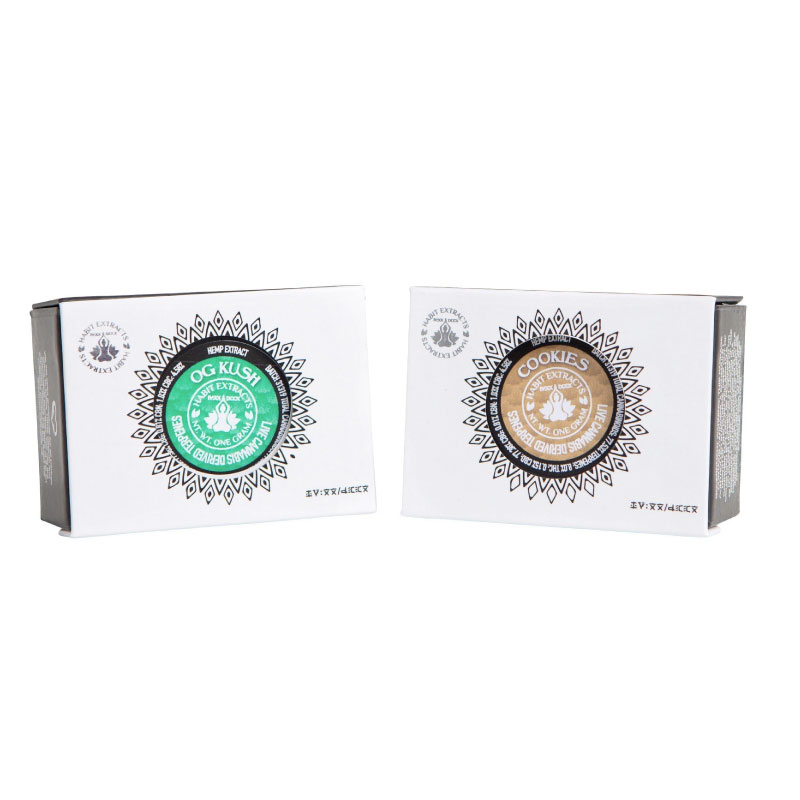
$50.00
Simply Crafted CBD
Simply Crafted CBD Live Resin CBD Concentrate 1 gram
| Total CBD: | 770 mg |
| CBD Potency: | 77% |
| Cost per mg CBD: | $0.06 |
| Extract Type: | Live Resin Extract |
| THC Content: | <0.3% |
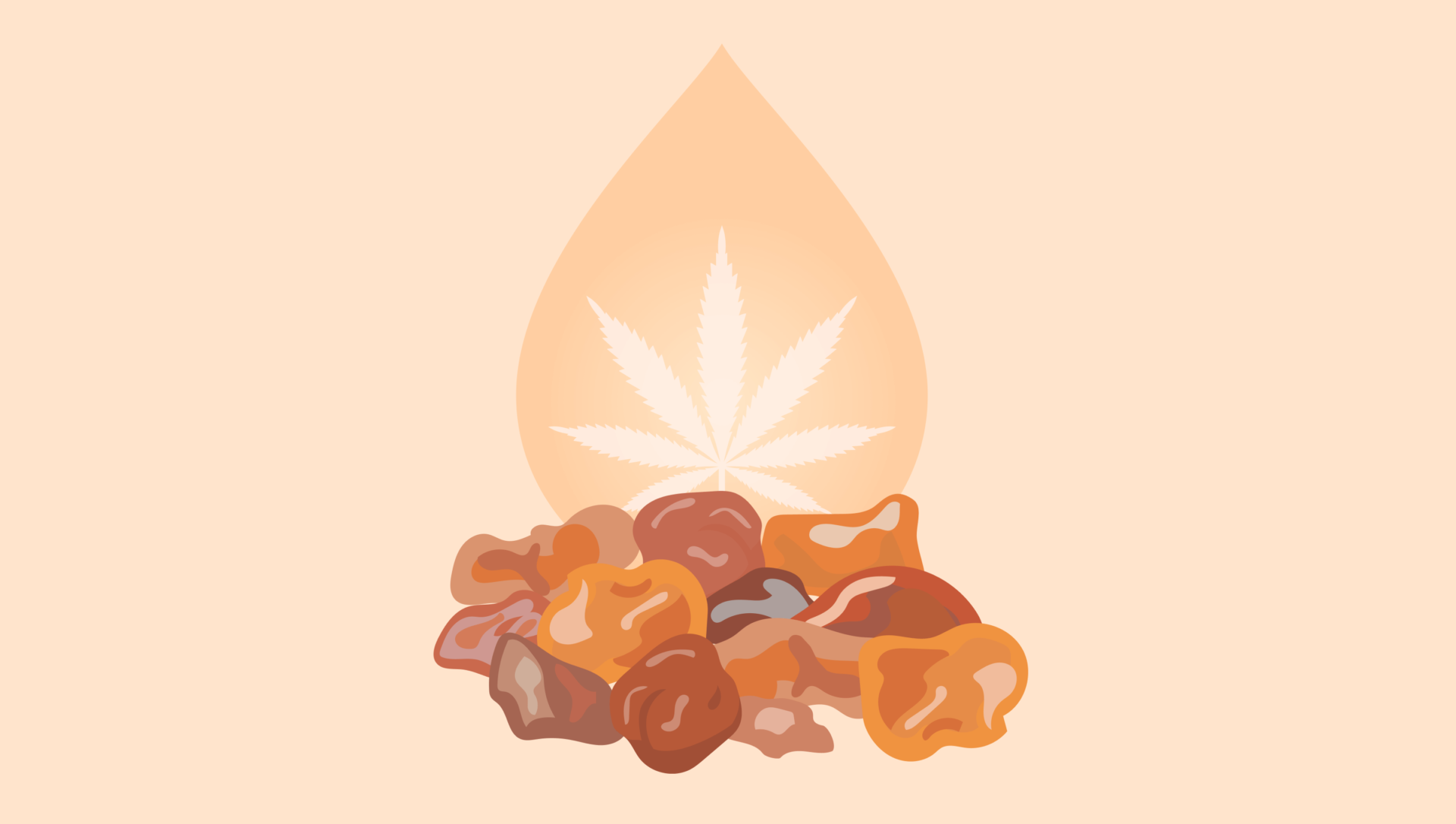
We’re now entering the era of live resin extracts — what are they, and why are they such an important new development in the CBD space?
Live resin extracts are the next level of CBD concentrates — taking the term ‘full-spectrum’ to a whole new level.
These products are made by extracting the active ingredients from hemp immediately after harvest while the phytochemical makeup is at its peak.
There are a lot of challenges in the way that make obtaining live resin challenging — but technology is evolving and live resin extracts are very close to being available and affordable by the mainstream public very soon.
We’re undergoing a cannabis revolution. One of the fastest-growing subsections of the cannabis industry is concentrated extracts like waxes and CBD crystals.
A recent report published by ArcView Research and BDS Analytics suggests the concentrates market alone will reach nearly $42.7 billion by 2024. In 2018, concentrates accounted for nearly 27% of all cannabis profits in the United States.
These are impressive figures — if the interest in concentrates continues at this pace, they’ll be the dominant form of cannabis products within the next 3-5 years.
As cannabis concentrates become more popular, and more people are stepping in to add their own twist, we’re starting to see some new innovations in the cannabis concentrate space.
One of the more interesting innovations to surface recently is live resin extracts — extracts made from cannabis plants while they’re still alive.

| Total CBD: | 770 mg |
| CBD Potency: | 77% |
| Cost per mg CBD: | $0.06 |
| Extract Type: | Live Resin Extract |
| THC Content: | <0.3% |
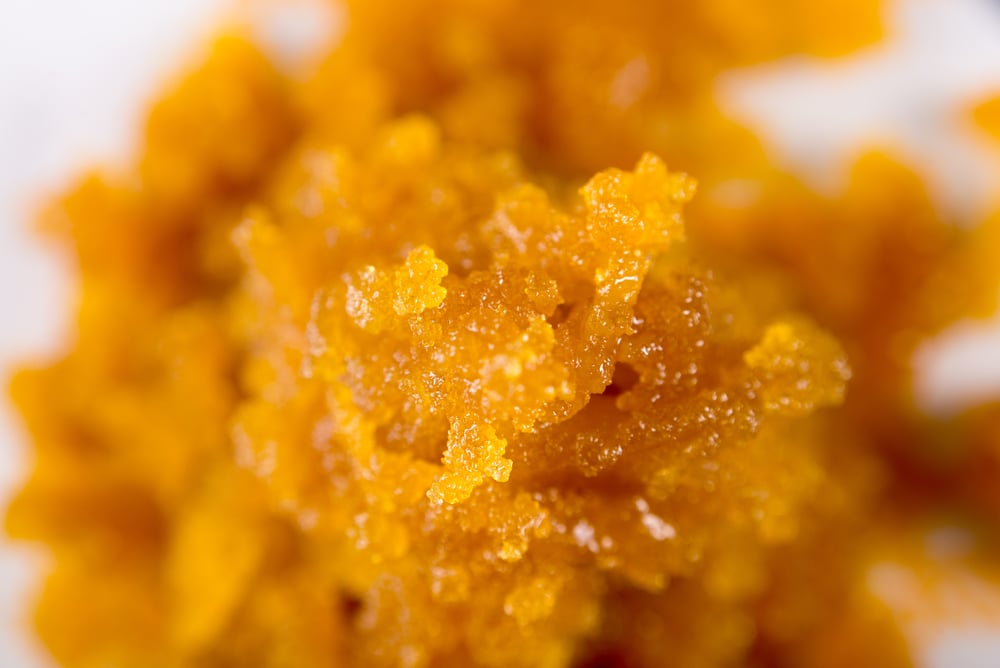
Live resin is extracted from living cannabis plants. They’re made from plants that haven’t been dried, cut, cured, or any other process fatal to the plant.
Cannabis plants can survive a few hours after being cut from the roots but will die as they dry out after harvest.
Coming from fresh, living plants — live resin extracts contain high concentrations of terpenes, which preserves the plant’s powerful aroma.
Traditional dried-plant extractions lose up to 95% of their terpene profiles before ever going through the extraction process — which means most of the original cannabis smell doesn’t translate into the final extract.
Live resin extraction maintains the highest terpene content of any other extraction technique. Period. These terpenes are important because they offer a lot of therapeutic benefits of their own, and give the extract its characteristic aroma.
Although nobody knows exactly where or when live resin extracts were invented, you can thank William “Kind Bill” Fenger for bringing them into the mainstream.
Kind Bill a.k.a the “Godfather of Live Resin Extracts”, has been producing cannabis extracts since the 1980s. He first came up with the idea for using fresh cannabis plants back in 2010 and spent the last decade perfecting the art to make it what it is today.
Others have made extractions from the live cannabis plant — the usual method for doing this involved using freshly frozen flowers and extracted using butane in an open-blasted system.
This method works but is exceptionally dangerous as the butane could ignite and explode during the process.
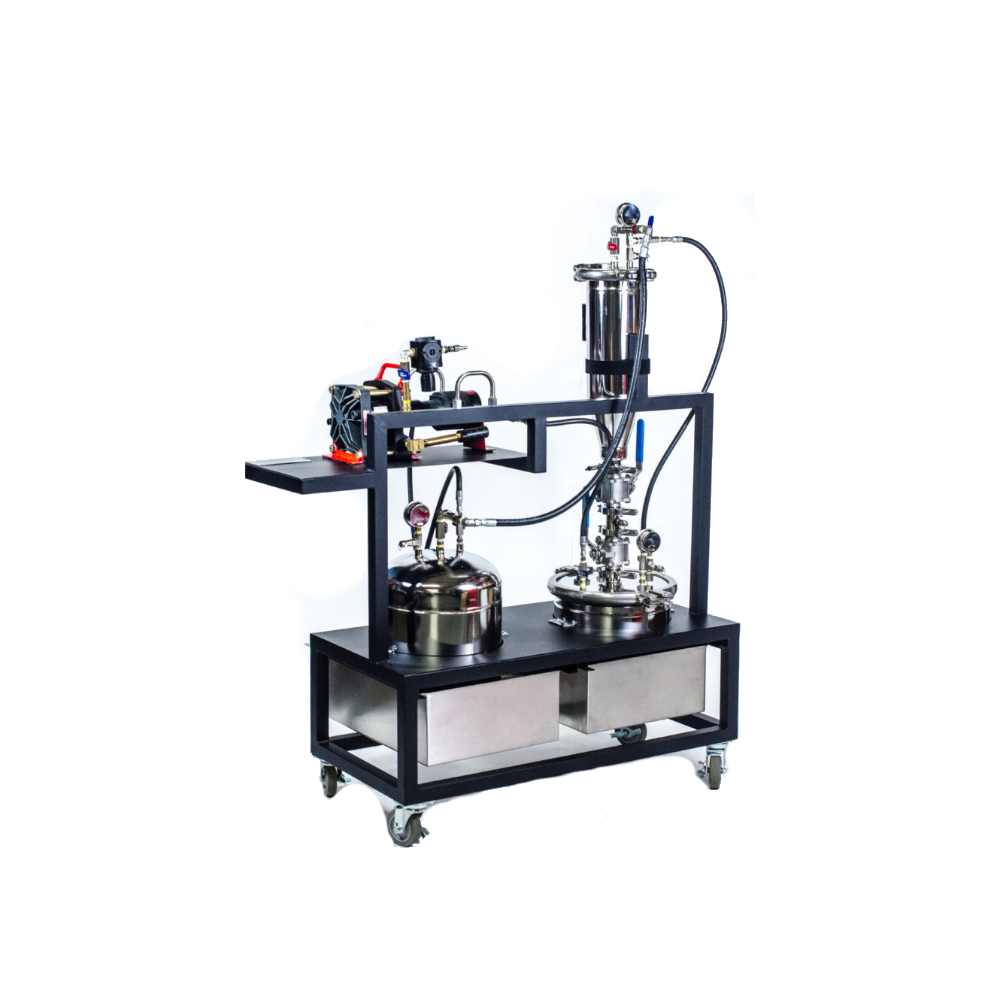
On top of that, the yields were simply too low to be of any real consideration. You lose a lot of cannabis in this process — which ultimately means losing money, so it was largely ignored by commercial operations.
Kind Bill teamed up with a man named Giddy Up — the founder of the cannabis extraction company EmoTek — in 2013 to figure out a better way to make commercially viable live resin extractions.
With EmoTek hardware and Kind Bill’s cannabis expertise, they were able to efficiently extract resin from live cannabis plants for the first time.
The process uses a machine called OBE-Dos unit — it’s a closed-loop system of ultra-cooled butane. These units create the perfect conditions for extracting resin from the live cannabis plant in its entirety. This method is so efficient it’s finally become economically viable to produce live resin extracts commercially.
Now companies all over the world are buying their own OBE-Dos Units or equivalent systems to cash in on this new form of cannabis concentrates.
These concentrates look very similar to any other cannabis concentrate — the difference is in the aroma and chemical profile. They often have a stark golden color as a result of pigments from the fresh plant resin before it has a chance to oxidize. Live resins also tend to have a waxy, sometimes slippery, consistency.
You can find live resin extracts in the form of waxes, shatters, dabs, and preloaded vape pens and cartridges.
One key difference between live resin extracts and traditional concentrates is the way they change over time.
While normal shatters and waxes will maintain their color and consistency, live resin extracts can evolve over time — starting out with a sappy texture, then becoming cloudy, and eventually developing a more granular texture. This change happens as the terpenes evaporate and the stability of the resin begins to break down.
You can use live resin extracts at all stages — but they’re considered the best when consumed fresh. The shorter shelf life of live extracts is a byproduct of being a high-grade fresh extract.
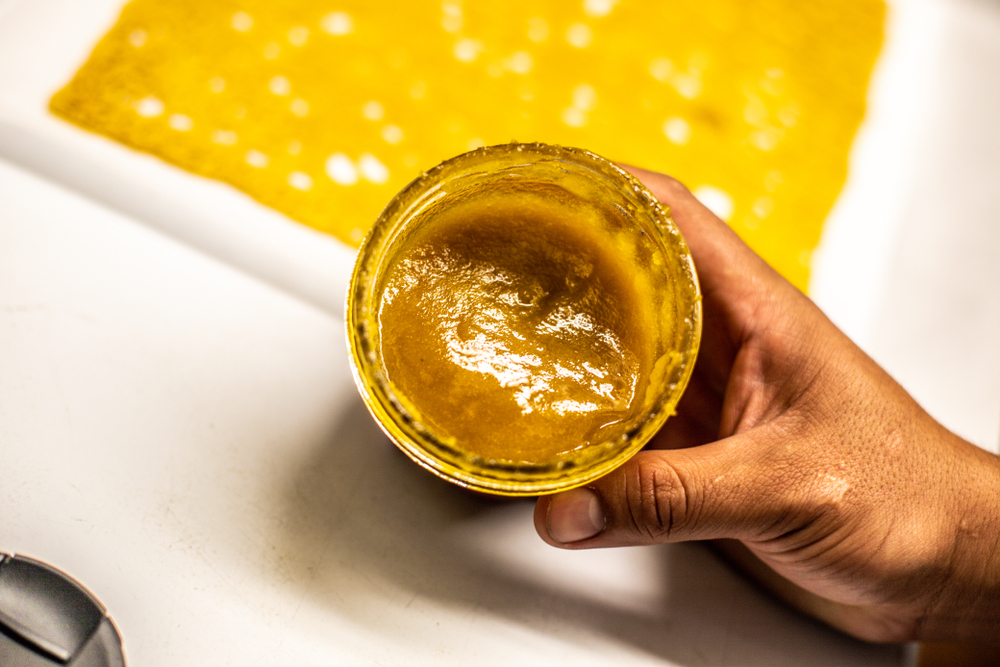
The original interest in live resin extracts came out of the recreational marijuana space using high THC strains. Today, you can find live resin extracts made from high-CBD hemp strains as well.
Hemp plants produce terpenes the same as marijuana. These terpenes have a lot more to offer than flavor alone — many of them have their own set of therapeutic benefits.
We expect to see a lot of development in the live hemp resin extract space in the coming years as people become more aware of the benefits of terpenes.
Suggested Reading: Hemp vs. Marijuana –What’s the Difference?
Live resin extracts are especially rich in terpenes compared to other concentrates.
This is because terpenes quickly evaporate after the plant is harvested, dried, and processed — leaving only a fraction of the original terpene profile behind in the final product. Some experts suggest conventional resin extracts only contain about 5% of the original terpene profile. Live resin extracts contain closer to 90% of the original terpene level of the plant.
A key component to maintaining terpene profiles is the cooler temperature process.
Terpenes are volatile compounds — which means they’re small enough to evaporate at high temperatures. Even room temperature is enough to evaporate most terpenes — so a true live resin extraction will involve cooling the plant and solvent to very low temperatures.
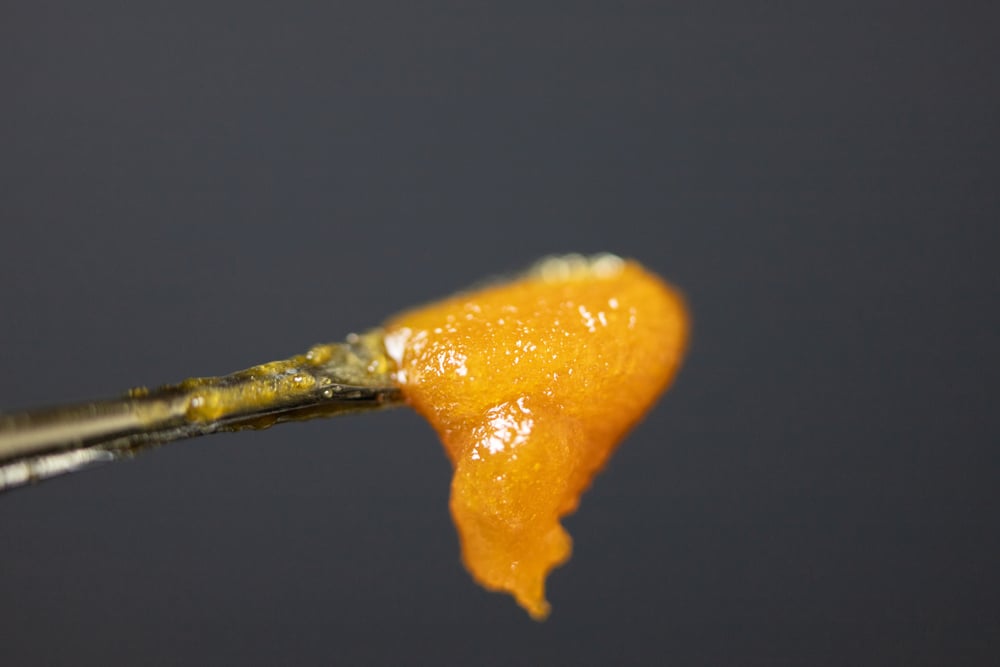
A similar benefit to live resin extracts can be correlated to the cannabinoid profile as well. When the plant is harvested, these compounds immediately begin breaking down and changing as the plant begins to die. This also occurs under heat.
One of the most important changes is the breakdown of CBD (cannabidiol) and delta 9 THC into another cannabinoid known as CBN (cannabinol).
CBN is a much stronger sedative than CBD and gives the final concentrate a stronger couch-lock “lazy” feel. It also means less CBD or THC in the final product than you may want.
Using live plants for the extraction process gives the final product a flavor profile almost identical to the fresh plant — making it easy to identify extracts made from plants that were low in quality, to begin with.
If a manufacturer isn’t using the best plants they possibly can to create these extracts — you can smell it.
This isn’t the case with isolates — which have had all the other compounds removed from the extract. It’s nearly impossible to tell the quality of the hemp used to make isolates without a Certificate of Analysis.
The vast majority of CBD products out there are made from poor quality plants that have been “recovered” by simply turning them into an isolate. The high-quality stuff is reserved for raw hemp flower, full-spectrum extracts, and live resin extracts.
Additionally, companies will often recombine terpenes into their products to bring back a flavor profile — referred to as broad-spectrum extracts. The problem is that these terpenes are often synthetic or come from completely different plants than cannabis.
If you’re buying a product made using a live resin extract — there’s a much better chance you’re buying something of quality than not.
Check out our List of Scam CBD Companies You Should Avoid.
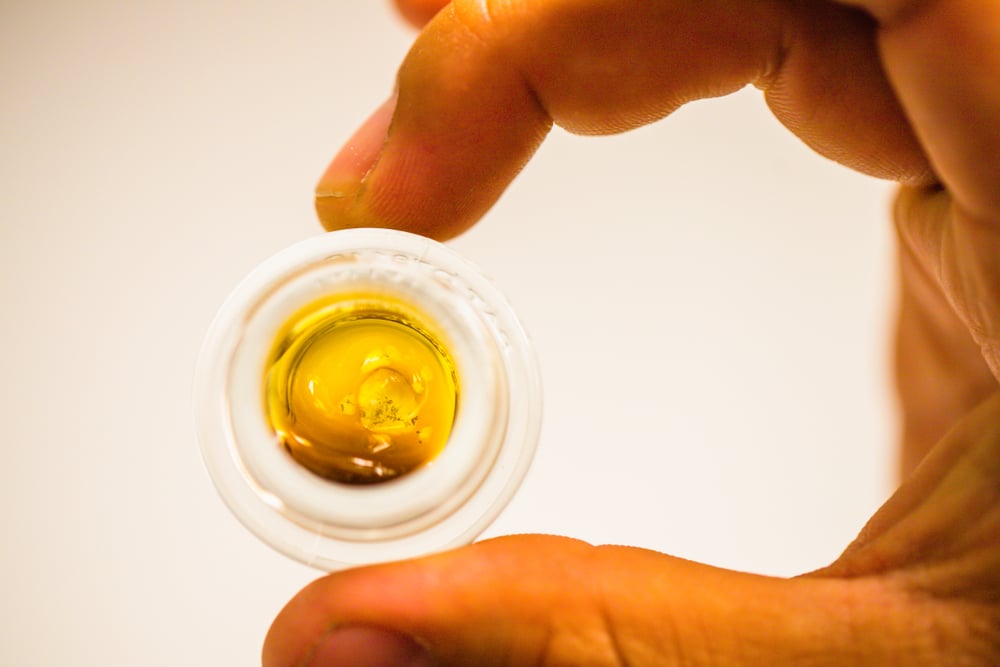
Most CBD products on the market are made with a CBD isolate or broad-spectrum extract. These work fine, but it’s very hard to determine the quality of these products by taste or appearance alone. You’ll need a lab assessment to determine good from bad in this respect.
Some companies make full-spectrum extracts, which preserve some of the terpene profile of the plant. Full-spectrum extracts are usually made with dried plants and therefore lack the full terpene profile. They have a similar taste and aroma to the fresh plant, but nothing even close to what live resin offers. It can be difficult to tell the quality of the starting material from this extract type.
Live resin extracts are the new “gold standard” for full-spectrum extracts. They capture the entire phytochemical profile of the plant — including cannabinoids, terpenes, and other phytochemicals. You can easily tell how the quality of the starting hemp was with these extracts based on the color, texture, and aroma of the extract.
Here’s a quick breakdown of each type of product for the sake of comparison:
At the moment, this is the closest thing we have available in the mainstream market that compares to live resin extracts. Full-spectrum extracts maintain as much of the chemical profile contained in the hemp (or marijuana).
The plants are first dried, cured, and aged before going through this process, so a large number of the terpenes won’t be present when it finally comes time to make the extraction.
Full-spectrum extracts are used to make any type of product you can think of. You can find them as concentrates such as shatters or dabs, or mixed together with other compounds to make oils, E-liquids, gummies, and topicals.
| Number | Product | Total CBD | Potency | Cost per mg CBD | Link |
|---|---|---|---|---|---|
|
1 |

CBDfx CBD Wax |
300 mg |
30% |
$0.17 |
|
|
2 |

Blue Moon Hemp CBD Shatter |
500 – 1000 mg |
99.6% |
$0.06 – $0.07 |
|
|
3 |

Elixinol X-Pen |
1000 mg |
10% |
$0.13 |
|
|
4 |

Reakiro Hemp Extract RxPen |
1000 mg |
10% |
€0.07 |
CBD isolates are by far the most common source of CBD on the market. It’s made by removing all the other cannabinoids and terpenes from the extract — leaving behind pure CBD.
You can buy these as purified CBD crystals or combined together with other ingredients to make all other categories of CBD products.
The problem with isolates is that you have no idea what the original state of the hemp used to make them was. Companies will often sell their lowest quality leaves, trim, flowers, and even plant stalks to extraction labs to convert into this extract. This is then sold to CBD companies around the world to create their products.
| Number | Product | Total CBD | Potency | Cost per mg CBD | Link |
|---|---|---|---|---|---|
|
1 |

Infinite CBD Absolute Zero Isolate |
1000 – 28,000 mg |
99% |
$0.02 – $0.03 |
|
|
2 |

Endoca CBD Crystals |
500 mg |
99% |
€0.09 |
|
|
3 |

Nordic Oil CBD Crystals |
996 mg |
99.6% |
€0.05 |
|
|
4 |

Green Roads CBD Dab Crystals |
250 – 1000 mg |
99.9% |
$0.07 – $0.12 |
|
|
5 |

CBDistillery CBD Powders |
500 – 14,000 mg |
99.9% |
$0.03 – $0.04 |
Broad-spectrum extracts are a combination of the two. They use a CBD distillate or isolate and combine it together with other cannabinoids and terpenes to resemble something closer to a full-spectrum extract — with a few alterations.
There are clear advantages to doing this — such as being able to offer a product with benefits similar to a full-spectrum product, while simultaneously being able to guarantee these products are free from the psychoactive (and illegal) cannabinoid, THC.
However, there are downsides to this form of extract as well. The biggest comes down to the marketing efforts companies are using.
Many businesses are claiming their products to be “full-spectrum” but are in reality only using CBD isolates and a few added terpenes — often simple terpenes such as limonene or beta-caryophyllene which are either synthetic or come from plants other than cannabis.
This is misleading because a proper full-spectrum extract will have as many as a dozen or more cannabinoids and several hundred different terpenes — which is radically different.
| Type of Extract | Pros | Cons |
| Live Resin Extracts | • Contains the richest terpene content possible • Incredibly potent flavor profile • The use of high-quality plants can’t be faked | • More expensive on average than other extract types • Texture and flavor can break down over time |
| Full-Spectrum Extracts | • Includes a more complete phytochemical profile to isolates • Offers some of the original flavor profile of the raw plant • Relatively cheap to produce | • Lacks the flavor and terpene profile of a live resin extract • Can be masked with other terpenes to hide the use of low-quality plants |
| Broad-Spectrum Extracts | • Offers a cannabinoid profile similar to full-spectrum, while guaranteeing no THC content • Usually cheaper than live resin and full-spectrum products | • May contain synthetic terpenes and chemical fillers • Often marketed with misleading terminology |
| CBD Isolate (Distillates) | • Offers a very cheap source of CBD or other specific cannabinoids • Better for use with other supplements or medications | • Lacks other phytochemicals that support the effects of CBD and other cannabinoids • Often made using low-quality, rotten, or contaminated plants |
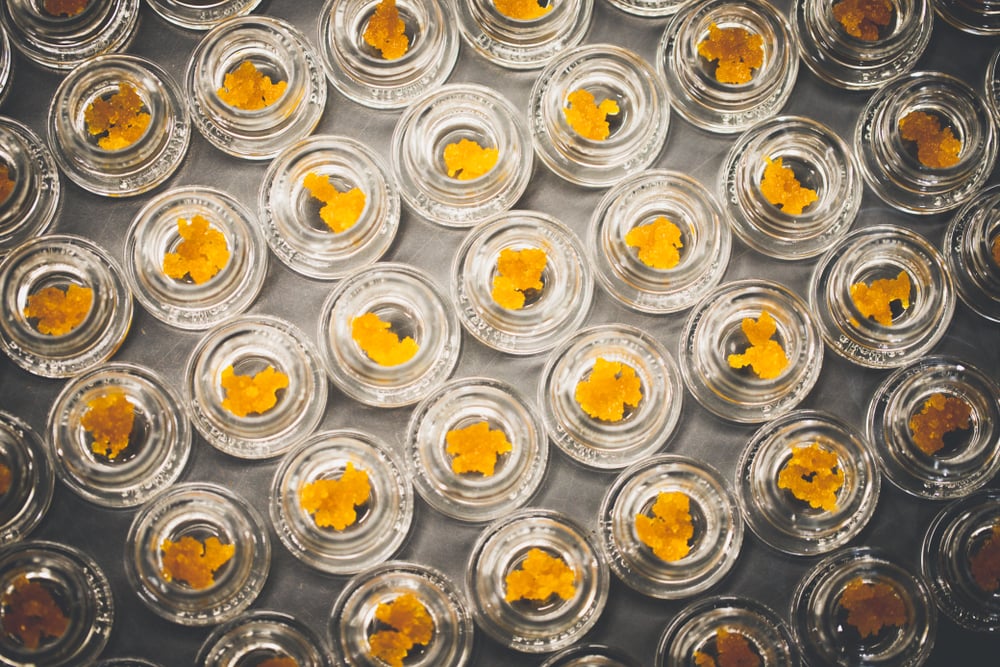
Most CBD products on the market are made from concentrates in one form or another no matter if they’re considered “full-spectrum” or “isolate”. Companies will either make their own extracts or buy them from someone else. It’s then mixed with a carrier oil or other ingredients to make a topical or edible product.
For the past several years, live resin extracts have taken a backseat. Most companies simply ignored them because of their higher cost to produce and shorter shelf life than other concentrates.
But times are changing.
As more people become aware of the advantages of live resin extracts in terms of flavor profile and overall quality — it’s becoming clear that this form of extract has an important place in the market.
The key advantages of live resin extraction are the ultra-high terpene content and the ideal cannabinoid profile. Live resin extracts produce better products overall, even compared to full-spectrum extracts, which are widely considered the best options for consumers at the moment.
Perhaps even more importantly, live resin extracts demand manufacturers to use only high-grade hemp or marijuana plants. You can’t make live resin extracts without top-notch starting material — it just doesn’t work.
As time goes on and consumers become more aware of the advantages of live resin extracts over traditional extraction techniques, you can bet the market for this niche product is going to grow dramatically.
The biggest area we’re going to see this new form of extraction enter the mainstream is in the form of vaporizers and vape cartridges.
Watch this space.